Nominated innovations
1000 innovative clean energy solutions and > 150 framework enablers with the potential to deliver more than twelve gigatonnes of avoided emissions by 2030
These assessments are based on a basic avoided emission assessment. The overall concept of avoided emissions is that a solution (product or service) enables the same function to be performed with significantly less GHG emissions. The method of measuring avoided emissions, is to compare a baseline scenario without the enabling solution, with a scenario using the enabling solution; whereby the baseline represents the ‘business as usual’ (BAU) scenario.
These assessments are based on the framework document: The Avoided Emissions Framework (AEF) from September 2020

Optimized tap nozzles saving water
Conventional taps allow water to gush out at around 10–12 liters per minute – but only a fraction of that water is actually used for washing hands or rinsing plates. Altered:Nozzle “atomizes” the water, breaking it up into a high speed dense mist made out of millions of individual drops. The speed of the water is also increased up to 50 km/h. This way the user gets in contact with, and uses, every single drop of water coming out of the tap. The result is only 2% of the flow compared to a regular tap. It consists of a simple retro-fit that can be installed in less than a minute in most existing taps in the world today. This design is said to significantly reduce water consumption as well as energy.
Sweden
≈10

Altered Stockholm AB
Optimized tap nozzles saving water
Conventional taps allow water to gush out at around 10–12 liters per minute – but only a fraction of that water is actually used for washing hands or rinsing plates. Altered:Nozzle “atomizes” the water, breaking it up into a high speed dense mist made out of millions of individual drops. The speed of the water is also increased up to 50 km/h. This way the user gets in contact with, and uses, every single drop of water coming out of the tap. The result is only 2% of the flow compared to a regular tap. It consists of a simple retro-fit that can be installed in less than a minute in most existing taps in the world today. This design is said to significantly reduce water consumption as well as energy.
≈10Mt CO2e/year
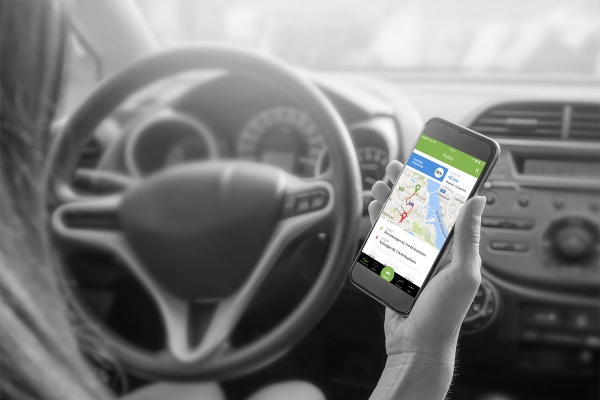
AI-based platform for smart driving
Greater Than’s platform can reduce fuel consumption and increase driver awareness through driving data analysis. Customers insert an on-board diagnostic module into the USB port of their car. This is synced to the driver’s smart phone and information is fed to the cloud. Based on how the driver performs, the innovation, called Enerfy Driving, gives low-risk or high-risk scores. Low-risk drivers are those that drive generating the least amount of environmental impact. The technology processes large amounts of driving data, algorithms performing risk assessment are built on machine learning and generate data in real time.
Sweden
≈100

Greater Than AB
AI-based platform for smart driving
Greater Than’s platform can reduce fuel consumption and increase driver awareness through driving data analysis. Customers insert an on-board diagnostic module into the USB port of their car. This is synced to the driver’s smart phone and information is fed to the cloud. Based on how the driver performs, the innovation, called Enerfy Driving, gives low-risk or high-risk scores. Low-risk drivers are those that drive generating the least amount of environmental impact. The technology processes large amounts of driving data, algorithms performing risk assessment are built on machine learning and generate data in real time.
≈100Mt CO2e/year
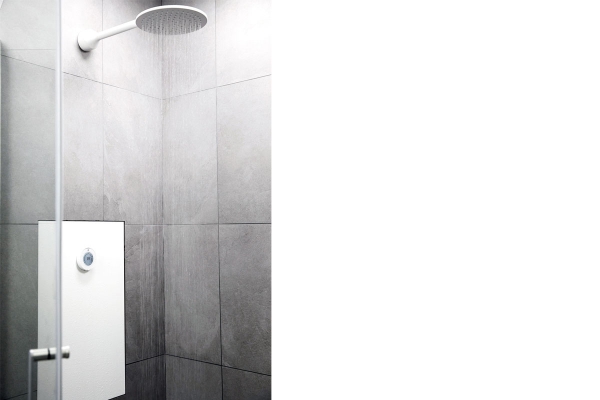
Water recirculating shower
Orbital Systems developed a real-time water purification technology, implemented in its recirculating shower which results in domestic water savings. In the shower, the water from the drain is collected, purified and looped back to be re-used, enabling water and energy savings. According to the company, their solution results in up to 90% of the water and 80% of the heating energy being saved, while at the same time delivering cleaner water compared to conventional showers. The technology is based on what is used today by NASA for space missions.
Sweden
≈10

Orbital Systems AB
Water recirculating shower
Orbital Systems developed a real-time water purification technology, implemented in its recirculating shower which results in domestic water savings. In the shower, the water from the drain is collected, purified and looped back to be re-used, enabling water and energy savings. According to the company, their solution results in up to 90% of the water and 80% of the heating energy being saved, while at the same time delivering cleaner water compared to conventional showers. The technology is based on what is used today by NASA for space missions.
≈10Mt CO2e/year
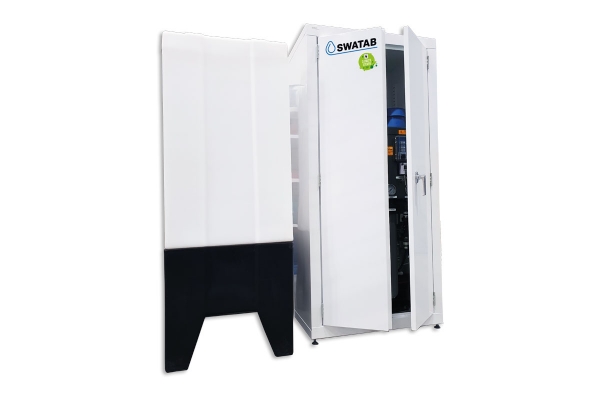
Environmentally friendly laundry filter
Up to 90 percent of all chemicals washed into sewage from households consist of cleaning liquid, detergent and fabric softener. Detergents can contain micro plastics that pass through water treatment plants into natural water systems. Scandinavian Water Technology AB (SWATAB) has developed a solution they call DIRO-TM21 that enables laundry washing without detergents, at lower temperatures, giving shorter drying times. DIRO-TM21 is a filter system that can be readily installed in any public or private facility. Since DIRO filters out particles in water that can adhere to fabric, the laundry comes out not only clean but also soft to the touch.
Sweden

Scandinavian Water Technology AB
Environmentally friendly laundry filter
Up to 90 percent of all chemicals washed into sewage from households consist of cleaning liquid, detergent and fabric softener. Detergents can contain micro plastics that pass through water treatment plants into natural water systems. Scandinavian Water Technology AB (SWATAB) has developed a solution they call DIRO-TM21 that enables laundry washing without detergents, at lower temperatures, giving shorter drying times. DIRO-TM21 is a filter system that can be readily installed in any public or private facility. Since DIRO filters out particles in water that can adhere to fabric, the laundry comes out not only clean but also soft to the touch.
Currently unavailable
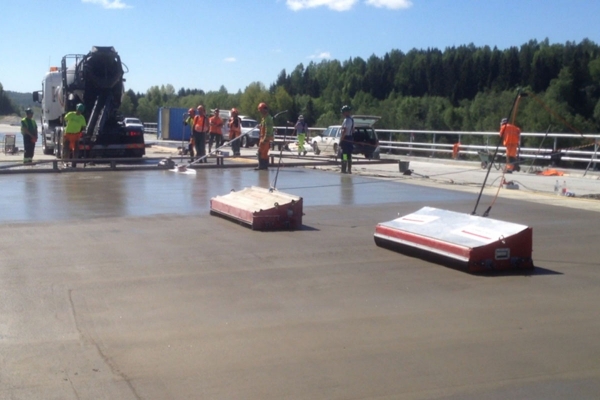
Stronger concrete with less cement
Cement production accounts for 6–8 % of global CO₂ emissions. Thus, changing the way concrete is produced is very important in abating climate change. Strongcrete technology better controls the concrete casting process and gives the concrete an improved compaction, making it possible to reduce the cement in the concrete mix by 20% and at the same time improve the quality of the concrete. The innovation also includes a remotely controlled robot that travels over the surface of the soft concrete, which delivers a stronger, flatter and tighter concrete surface thereby reducing very common problems like surface cracks as well as enables better bonding.
Sweden
≈100

Strongcrete AB
Stronger concrete with less cement
Cement production accounts for 6–8 % of global CO₂ emissions. Thus, changing the way concrete is produced is very important in abating climate change. Strongcrete technology better controls the concrete casting process and gives the concrete an improved compaction, making it possible to reduce the cement in the concrete mix by 20% and at the same time improve the quality of the concrete. The innovation also includes a remotely controlled robot that travels over the surface of the soft concrete, which delivers a stronger, flatter and tighter concrete surface thereby reducing very common problems like surface cracks as well as enables better bonding.
≈100Mt CO2e/year
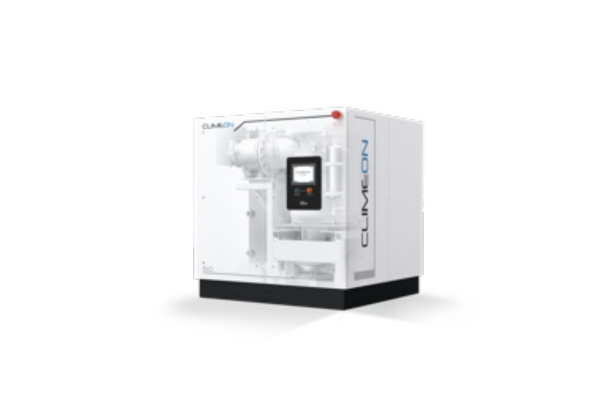
Electricity from waste heat
A substantial part of the energy used in the world is wasted as heat. Climeon AB has developed a solution to convert waste heat with temperatures between 70 and 120 °C into electricity through a vacuum process. One of the company’s key sectors is the marine sector where the Climeon Ocean™ solution converts waste heat from ship engines, creating up to several GWh of “free” electricity each year. The company claims that for some ships, that translates into a savings of more than 1,000 metric tons of fuel or 3,000 metric tons of CO₂ per year. An even larger sector is steel where Swedish steel producer SSAB running Climeon Ocean™ at their production site in Borlänge.
Sweden
≈10

Climeon AB
Electricity from waste heat
A substantial part of the energy used in the world is wasted as heat. Climeon AB has developed a solution to convert waste heat with temperatures between 70 and 120 °C into electricity through a vacuum process. One of the company’s key sectors is the marine sector where the Climeon Ocean™ solution converts waste heat from ship engines, creating up to several GWh of “free” electricity each year. The company claims that for some ships, that translates into a savings of more than 1,000 metric tons of fuel or 3,000 metric tons of CO₂ per year. An even larger sector is steel where Swedish steel producer SSAB running Climeon Ocean™ at their production site in Borlänge.
≈10Mt CO2e/year

Harvesting green energy from ocean waves
Waves4Power (W4P) has created a wave power system able to survive the toughest possible conditions. The system’s surface installation makes it easy to service; and it can be placed nearly anywhere. All the components in W4P’s solution are commonly available and well-tested, making the solution inexpensive and cost-effective to maintain and service. In addition to the development of the power system. The solution can be applied to varius sectors, such as providing the fish farming industry and oil platforms with green power and energy supply to off-grid locations.
Sweden

W4P Waves4Power AB
Harvesting green energy from ocean waves
Waves4Power (W4P) has created a wave power system able to survive the toughest possible conditions. The system’s surface installation makes it easy to service; and it can be placed nearly anywhere. All the components in W4P’s solution are commonly available and well-tested, making the solution inexpensive and cost-effective to maintain and service. In addition to the development of the power system. The solution can be applied to varius sectors, such as providing the fish farming industry and oil platforms with green power and energy supply to off-grid locations.
Currently unavailable
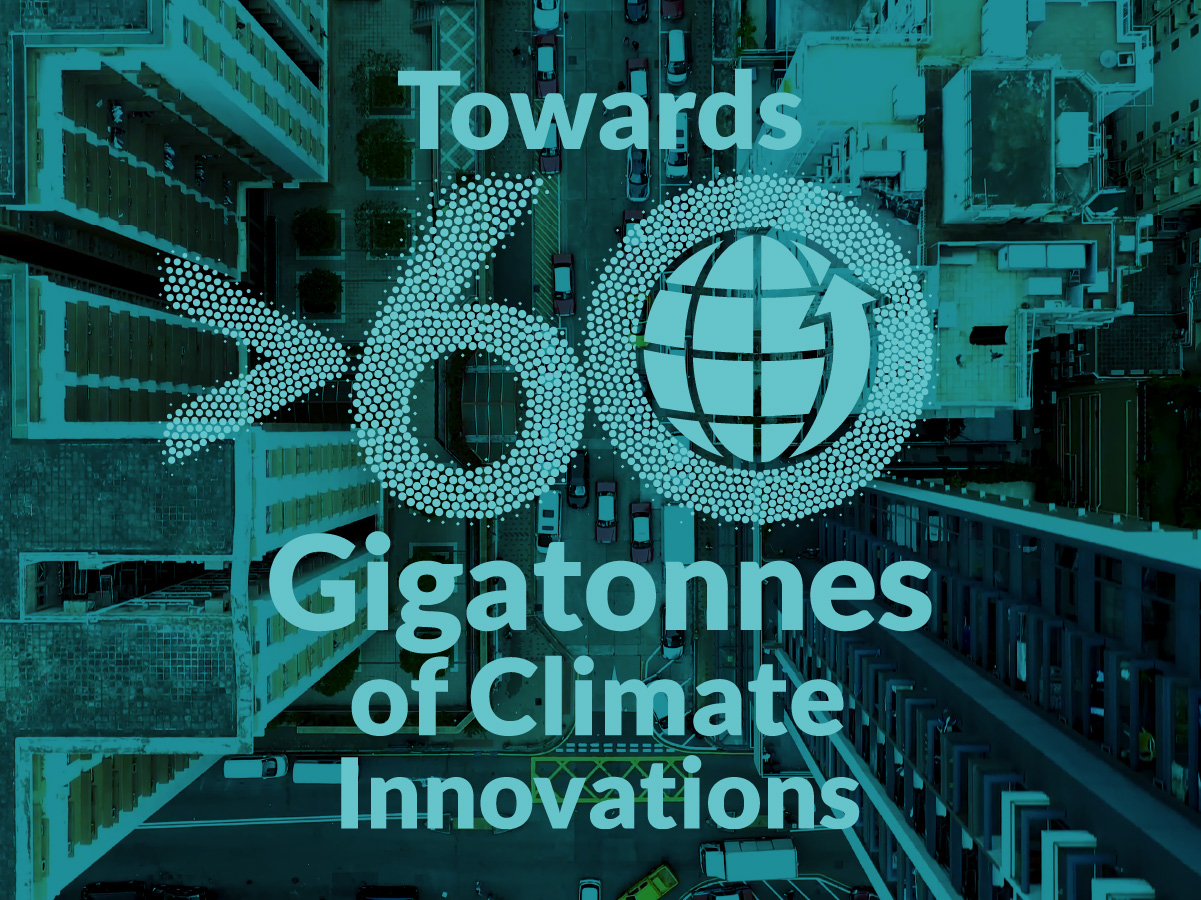
Building energy automation
Nordomatic provides solutions for building automation focusing on “smart buildings” and energy efficiency in larger properties. The concept is based on an approach towards heating, cooling and ventilation, which is referred to as ‘brilliant energy building automation.’ The concept entails utilising all the surplus energy which is generated in a building but often not utilised. The concept takes into account the property’s shell, giving each property a unique thermal inertia, which is utilised through optimised control.
Sweden
≈100
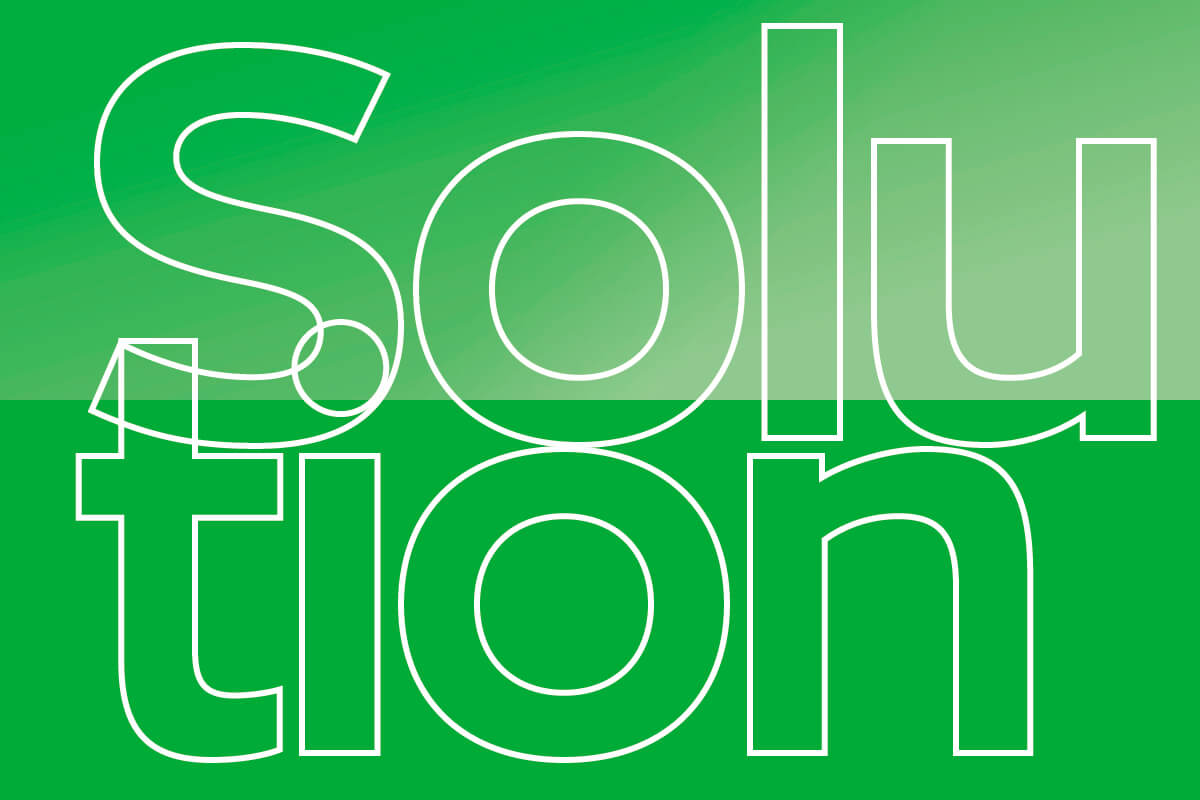
Nordomatic
Building energy automation
Nordomatic provides solutions for building automation focusing on “smart buildings” and energy efficiency in larger properties. The concept is based on an approach towards heating, cooling and ventilation, which is referred to as ‘brilliant energy building automation.’ The concept entails utilising all the surplus energy which is generated in a building but often not utilised. The concept takes into account the property’s shell, giving each property a unique thermal inertia, which is utilised through optimised control.
≈100Mt CO2e/year

IoT for facility management
Yanzi and Pythagoras cooperate using IoT for facility management to optimize the usage of office space. By placing sensors they know the precise usage of all desks and meeting rooms, and once they have the full picture they can reorganise so that the use of the office space increases. Most office spaces are only utilized about 50% of the time. By measuring and optimizing this rate can be increased and thereby energy is saved for heating, cooling and lighting and in the long term less buildings will need to be constructed.
Sweden

Pythagoras and Yanzi
IoT for facility management
Yanzi and Pythagoras cooperate using IoT for facility management to optimize the usage of office space. By placing sensors they know the precise usage of all desks and meeting rooms, and once they have the full picture they can reorganise so that the use of the office space increases. Most office spaces are only utilized about 50% of the time. By measuring and optimizing this rate can be increased and thereby energy is saved for heating, cooling and lighting and in the long term less buildings will need to be constructed.
Currently unavailable
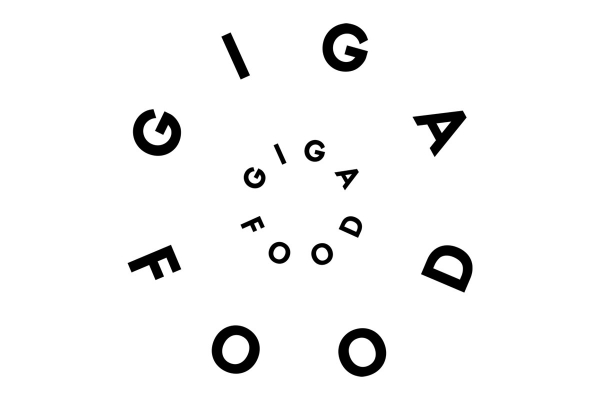
Producing climate-friendly food
Gigafood is a restaurant and catering service that serves climate-friendly dishes. All their dishes are certified with WWF’s label One Planet Plate, which means they are climate-smart and have a climate impact within the limits of the planet. All their catering is delivered with cargo bike and their packaging materials are ecologically sustainable. Gigafood therefore aims to create a food service that is sustainable for the whole planet.
Sweden
≈100

Gigafood
Producing climate-friendly food
Gigafood is a restaurant and catering service that serves climate-friendly dishes. All their dishes are certified with WWF’s label One Planet Plate, which means they are climate-smart and have a climate impact within the limits of the planet. All their catering is delivered with cargo bike and their packaging materials are ecologically sustainable. Gigafood therefore aims to create a food service that is sustainable for the whole planet.
≈100Mt CO2e/year